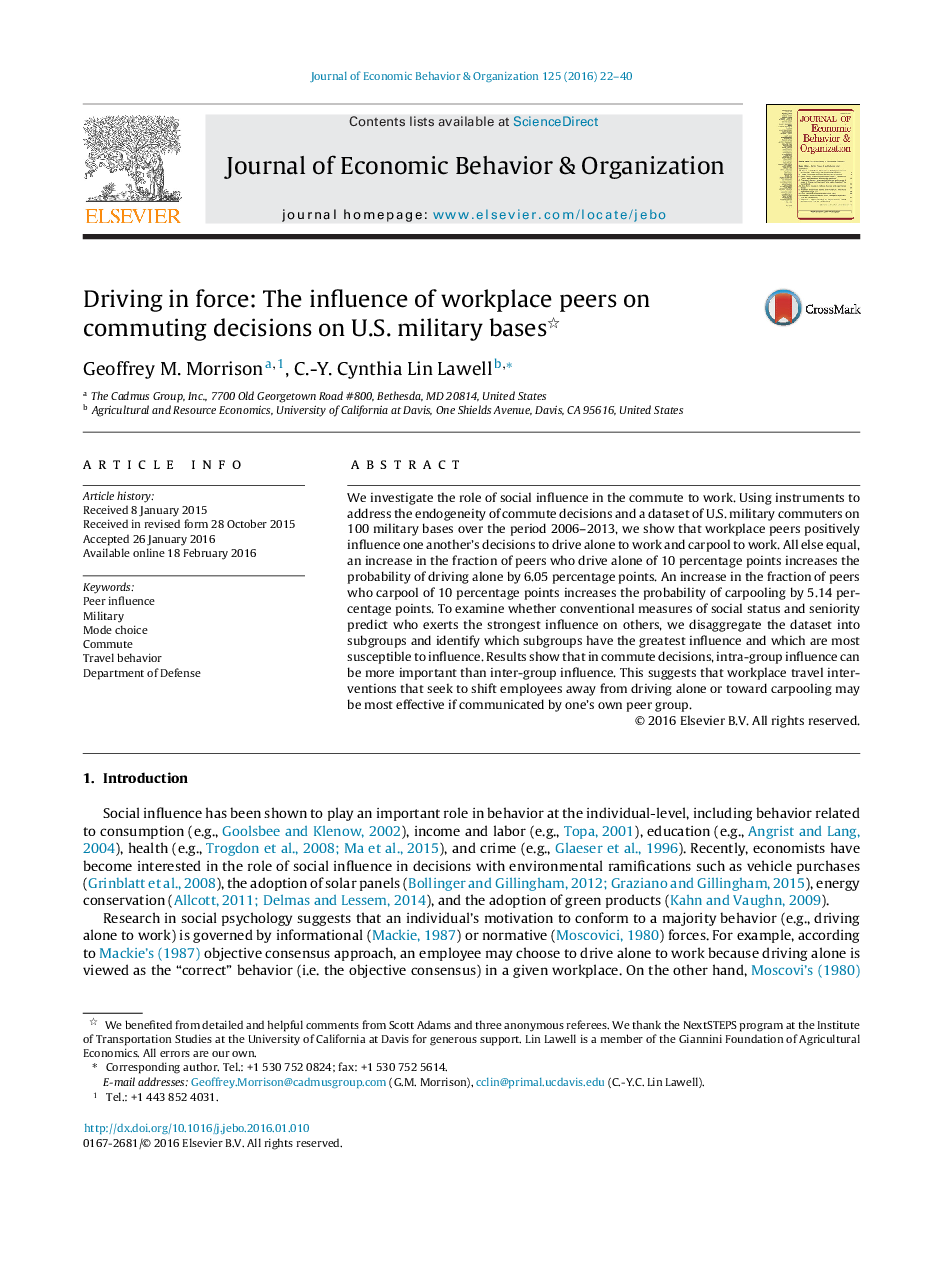| Article ID | Journal | Published Year | Pages | File Type |
|---|---|---|---|---|
| 883425 | Journal of Economic Behavior & Organization | 2016 | 19 Pages |
•We investigate the role of social influence in the commute to work.•Workplace peers positively influence one another's decisions to drive alone to work and carpool to work.•Intra-group influence can be more important than inter-group influence.
We investigate the role of social influence in the commute to work. Using instruments to address the endogeneity of commute decisions and a dataset of U.S. military commuters on 100 military bases over the period 2006–2013, we show that workplace peers positively influence one another's decisions to drive alone to work and carpool to work. All else equal, an increase in the fraction of peers who drive alone of 10 percentage points increases the probability of driving alone by 6.05 percentage points. An increase in the fraction of peers who carpool of 10 percentage points increases the probability of carpooling by 5.14 percentage points. To examine whether conventional measures of social status and seniority predict who exerts the strongest influence on others, we disaggregate the dataset into subgroups and identify which subgroups have the greatest influence and which are most susceptible to influence. Results show that in commute decisions, intra-group influence can be more important than inter-group influence. This suggests that workplace travel interventions that seek to shift employees away from driving alone or toward carpooling may be most effective if communicated by one's own peer group.
